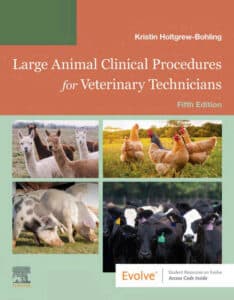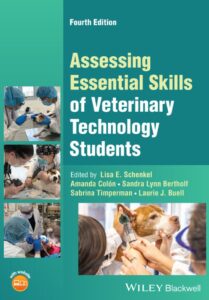Veterinary Clinical Skills

By Emma K. Read, Matt R. Read, Sarah Baillie
Veterinary Clinical Skills PDF provides practical guidance on learning, teaching, and assessing essential clinical skills, techniques, and procedures in both educational and workplace environments. Thorough yet concise, this evidence-based resource features sample assessments, simple models for use in teaching, and numerous examples demonstrating the real-world application of key principles and evidence-based approaches.
Organized into nine chapters, the text explains what constitutes a clinical skill, explains the core clinical skills in veterinary education and how these skills are taught and practiced, describes assessment methods and preparation strategies, and more. Contributions from expert authors emphasize best practices while providing insights into the clinical skills that are needed to succeed in veterinary practice. Presenting well-defined guidelines for the best way to acquire and assess veterinary skills, this much-needed resource:
- Describes how to design and implement a clinical skills curriculum
- Identifies a range of skills vital to successful clinical practice
- Provides advice on how to use peer teaching and other available resources
- Covers veterinary OSCE (Objective Structured Clinical Examination) topics, including gowning and gloving, canine physical examination, and anesthetic machine setup and leak testing
- Includes sample models for endotracheal intubation, dental scaling, silicone skin suturing, surgical prep, and others
Emphasizing the importance of clinical skills in both veterinary curricula and in practice, Veterinary Clinical Skills is a valuable reference and guide for veterinary school and continuing education instructors and learners of all experience levels.
This Book is Available For Premium Members Only













![Ettinger’s Textbook of Veterinary Internal Medicine 9th Edition [PDF+Videos] Ettinger’s Textbook of Veterinary Internal Medicine 9th Edition [True PDF+Videos]](https://www.vet-ebooks.com/wp-content/uploads/2024/10/ettingers-textbook-of-veterinary-internal-medicine-9th-edition-100x70.jpg)
![Textbook of Veterinary Diagnostic Radiology 8th Edition [PDF+Videos+Quizzes] Thrall’s Textbook of Veterinary Diagnostic Radiology, 8th edition PDF](https://www.vet-ebooks.com/wp-content/uploads/2019/09/textbook-of-veterinary-diagnostic-radiology-8th-edition-100x70.jpg)







